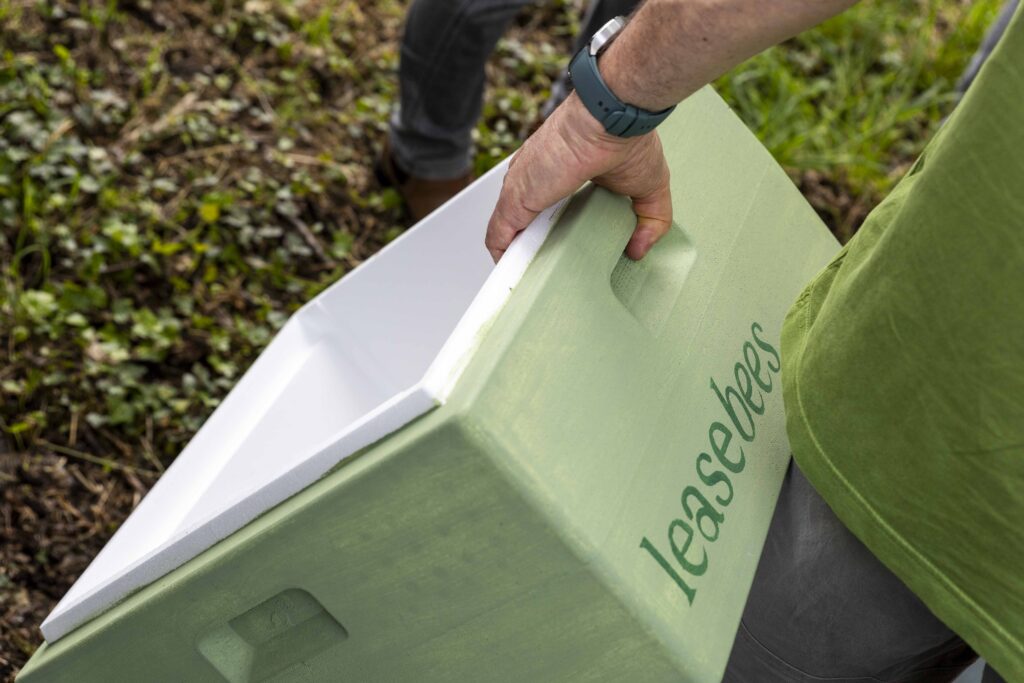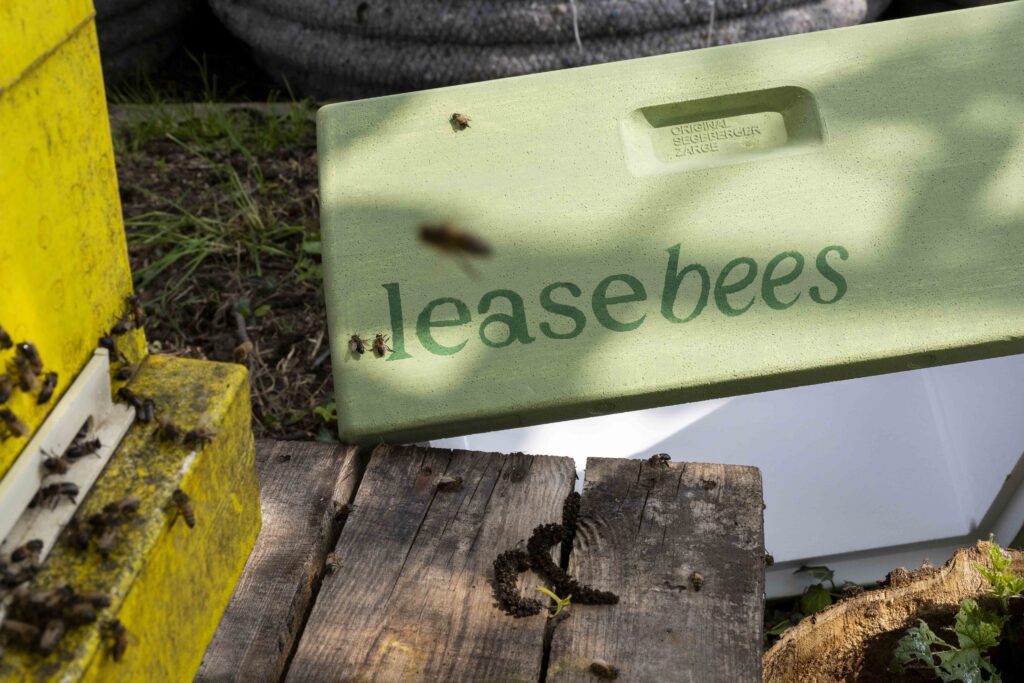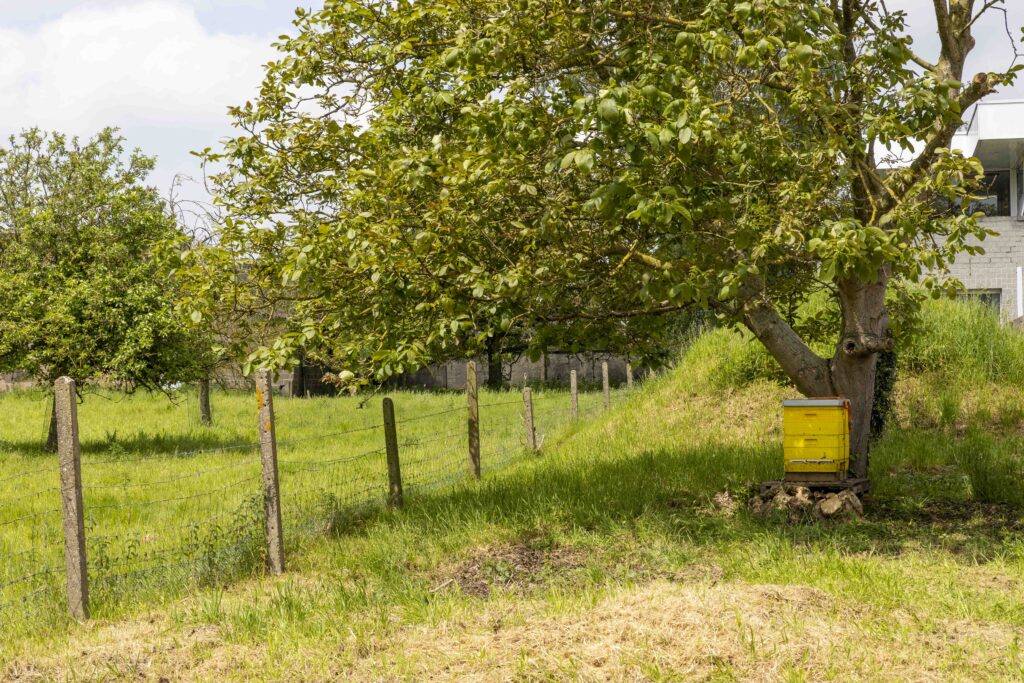Within the framework of the subsidy project ‘SMEs in an environment for the future’ we received the question how ‘our’ bees contribute to biodiversity in relation to reports about the displacement of wild bees. We asked Cunrath Cornelis of LeaseBees who placed the beehives on Alldrain’s site. He explains the impact of bees on biodiversity on our company site.

“Although the honey bee is often seen as a ‘domestic animal of humans’, it still plays an essential ecological role in the broader biodiversity story today,” says Cunrath Cornelis, founder of LeaseBees.
According to him, there are four ways in which the honey bees on Alldrain’s company site contribute to biodiversity:
1. Honey bees function as ecosystem enhancers in flower-poor zones
In areas like Alldrain’s company site, where few natural pollinators are present due to the lack of habitat, honey bees are often the only active pollinators on a trajectory toward increasing biodiversity.
Through their presence, flowers get the opportunity to reproduce again and they form a basis for the restoration of a vibrant ecosystem.
2. Active pollination increases plant diversity
Honey bees are active pollinators. By spreading pollen from plant to plant, they ensure better fruit set and more seed production. This increases the diversity and density of plants. These plants in turn provide food and shelter for insects, butterflies and birds.
3. The honey bee as a catalyst for ecological actions
Honey bees are visible and recognizable and thus capture the imagination. Their presence involves employees, suppliers, customers and other visitors in biodiversity.
It creates more support, leads to more investments in projects such as creating edges with nectar and pollen-rich vegetation, nesting places and pesticide-free zones.
It also leads to limiting mowing frequencies. Think also of initiatives like ‘Don’t Mow May’, an initiative by Knack and the initiative ‘Feed the Bee’, an initiative by the Pollinators.
4. The honey bee as an indicator for ecosystem health
A honey bee colony is sensitive to chemicals, monocultures and food shortages. A healthy bee colony therefore often also means a healthy landscape.
Through bee colony monitoring, companies and municipalities gain insight into the quality of their green structures. It is a form of ‘living data’ that can help with policy decisions and site management.
In LeaseBees’ approach, the honey bee is not used in isolation, but as the start of a broader trajectory that also integrates the needs of wild pollinators, soil life and vegetation.
“The beehive on Alldrain’s site is thus part of a broader biodiversity project that not only aims to house bees, but especially to stimulate awareness, greening and concrete action on and around the company site. The bees are therefore a starting point to make biodiversity concrete, visible and measurable,” Cunrath clarifies.

Visible attractor, not displacer
A frequently heard concern, according to Cunrath, is the potential competition between honey bees and wild pollinators.
This concern is not necessary on Alldrain’s site, according to him, because the site initially had little ecological value (few ecological connections, limited and one-sided food supply, little suitable nesting opportunities for wild pollinators).
In this context, the honey bee is not a competitor of wild pollinators, but rather a ‘visible driver’ for a set of measures that benefit the ecological recovery of the environment. It functions as a catalyst for broader measures that explicitly improve the living conditions of wild pollinators.
Through the beehive, Alldrain has taken follow-up steps with customized mowing management, creating shelter and nesting opportunities for wild bees such as with the benches made from the dead poplars on the company site.
In collaboration with the local garden contractor, the flower borders are ecologically composed, taking into account the flowering season, preferences of solitary bees and local species. There was a conscious choice for native species and structure-rich vegetation. Pesticide use is also avoided.
Monitoring and adjustment
LeaseBees evaluates annually whether the food supply on the sites where they have placed beehives is sufficiently diverse and robust for all pollinators. If the situation requires it, the bee population is adjusted or additional foraging area is created.
In the evaluation on Alldrain’s site, it was established that the existing greenery and the nearby zone have sufficient food capacity for balanced use by both honey bees and wild bees.
Since the beehive was placed at Alldrain, it has also become apparent that the number of flower-rich square meters has doubled compared to the initial measurement.
Observations of wild bees and hoverflies in the second year indicate a positive evolution in species richness.
And Alldrain is further engaging with biodiversity workshops for employees and is developing a green project in collaboration and co-creation with neighborhood residents, officials and local associations.

